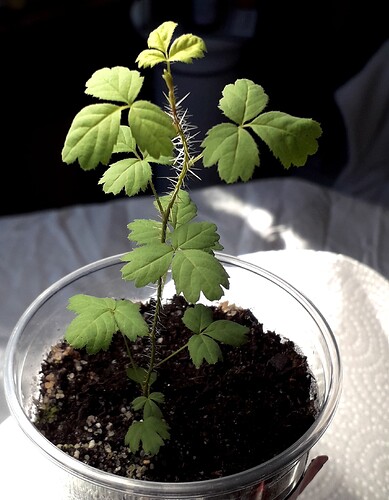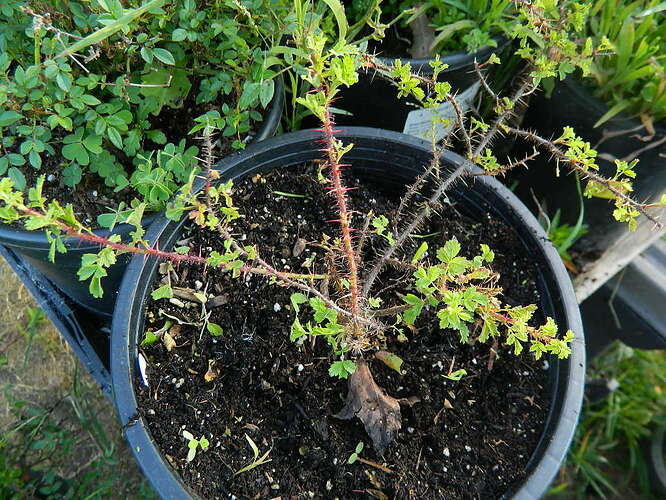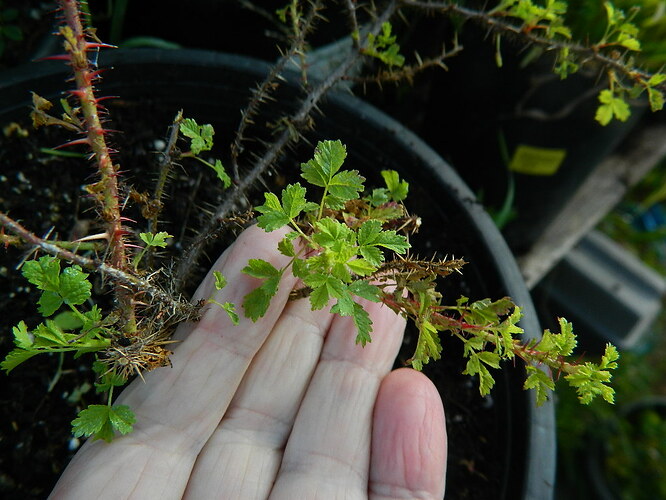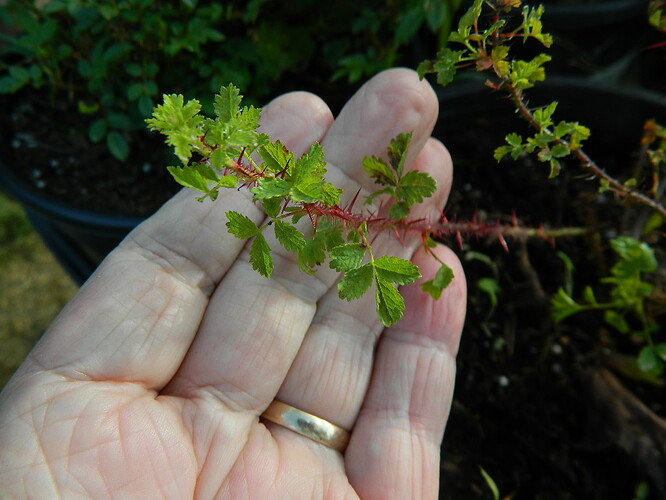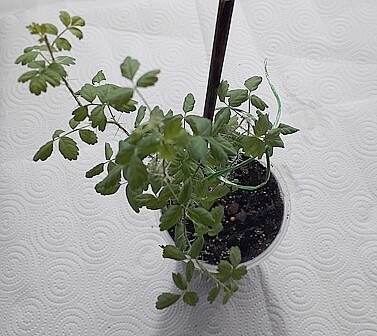Good luck! Keep me posted. ![]() Steve
Steve
I pulled it out, removed the blamed invasive “ornamental grasses” the City is using everywhere and which blow in to infest the yards. I also knocked off some of the concrete and replaced it with decent potting soil in hopes of its roots finding it and going nuts. Fingers crossed!
Thanks Kim! That does not sound easy. Here’s to hope!
Fyi: I have been talking with folks from the University of New Mexico as well as every native nursery found in AZ, NM and TX. So far no one has the it in stock. Agua Fria nursery in NM said that they would go collecting this summer and begin propagating it. So there is so good new there. In the same vein, my family and I are planning a trip down south of us to visit NM and see if we can collect materials for ourselves. If we are lucky I will happily share whatever we find.
Have an awesome day my friend!
-Douglas
I’m glad at least someone is interested in collecting it.

I am surprised that R. stellata ‘Mirifica’ started flowering already on 13.05.2024 this year and that the heyday has continued nearly uninterrupted until today, with quite a many buds still present. This is why this desert rose bears slightly reddish-colored rose hips so early and additionally fresh blossoms at the same time. Apparently the hot climate increasingly suits their inclination. In any case this is an unusual happening for me with Mirifica.
Due to the already said long flowering period of R. stellata ‘Mirifica’ this year, the rose hips are present in various stages of ripeness. However, it is worth noting that most of them are +/- 1.5 cm in diameter and only one younger hip reaches an actual size of 2.5 cm in diameter. For me this is an exciting fact, which could possibly indicate a natural (perhaps wheather effected) occurrance of chromosome doubling. I very much hope that this particular hip contains any achenes at all and that it will reach to full maturity undamaged.
I hope with you! Unfortunately, too often it means the small ones are empty and the larger ones have a few seeds. That’s what it does here.
Thank you for your comments! It’s always interesting and helpful to hear other observations. I just checked my records again. None of the 23 hips from the last season were empty, apart from two that aborted earlier. Each harvested rose hip contained between 17 and 50 achenes, with the higher numbers even occurring several times.
In total of the season 2023 yielded 28 germinations, mainly with R. foliolosa as pollen parent and 7 x with R. rugosa rubra, 2 x R. hugonis and 1 x R. nitida. One seedling seems to be quite interesting. It has between 7 and 9 leaflets and develops well. I still kept the Mirifica nutlets from last year. Let’s see if anything else comes of it and how the current season is progressing.
For all those who would like R. stellata ‘Mirifica’ for breeding and have not yet found a source for supplying this plant, I happened to come across an online store that sells these seeds in the US and possibly also in Canada. Perhaps this information will meet some interest.
“Southeastern U.S.”? The “Carolina Rose”? Methinks the source knows not of what they speak.
I would like to show a seven-week-old seedling from a 2023 batch of the cross R. stellata ‘Mirifica’ X R. hugonis. In the second germination cycle, 2024, were three sprouts in total with only a few weeks difference, but this is the last one of the three and the only one that is growing diligently and is interesting to keep and watch. In the first germination cycle, also appeared three seedlings from this cross, but unfortunately all three were weak and not vigorous.
Anyway, I’m still struggling to see a relationship to R. hugonis at moment. Perhaps I was a little late with my artificial pollination and it has become a self-seedling.
Possibly the bad performance of the other five weak seedlings could confirm this theory? I am looking forward to hearing from others. Many thanks!
Congratulations! I’ve played with Stellata mirifica for decade (literally) and find it hates to self in my climate. Most times, it fails to set any seed unless I intervene. I’ve had seeds set from Mirifica X Tom Thumb but didn’t plant them due to other issues preventing planting any that season. I’ve had Mirifica pollen work on Golden Angel (Moore) which flowered like a miniature with large, single pink, yellow and white flowers on a tremendously unhealthy plant which finally succumbed to what I presume was Downy. I currently have the more vigorous of the two Mirifica X Minutifolia. The weaker one died and this one keeps growing, glacially slowly, but growing. The only other Mirifica results were the two original seedlings which appeared to have been wind or bee created Mirifica X Fedtschenkoana. The weaker one died but “Puzzlement” continues thriving. 'Puzzlement' Rose If anyone in the continental US wishes suckers of Puzzlement, they can be roughed out and sent this spring for only the cost of postage. This is the Mirifica X Minutifolia in its two gallon nursery can.
roseseek, thank you so much for your insightful comment! The year 2023 was the first year I startet breeding with Rosa stellata ‘Mirifica’. Somehow it must have been a bit of luck that the conditions right away, especially with a very young plant, allowed for some successful fertilisations and even germination of a couple of seedlings.
In the end, only two seedlings worth keeping and observing have remained. One from the cross R. stellata M. X R. rugosa ‘Rubra’ (first cycle) and the latest seedling pictured above (second cycle).
I’m very curious to see what the current breeding year with R. stellata M. will hold. This year’s pollen donors are different, partly also in terms of ploidy. Overall, I was a bit more willing to take risks. Hopefully I can still report something nice.


